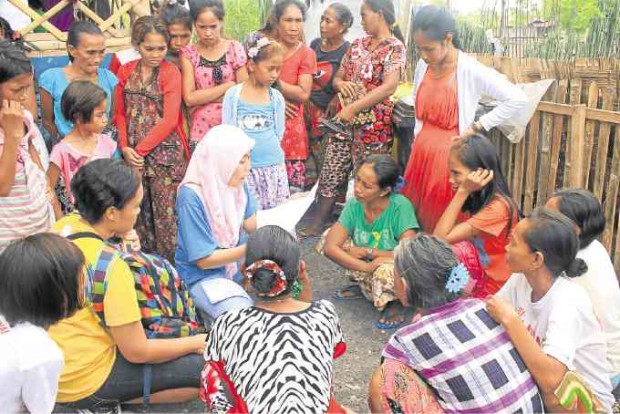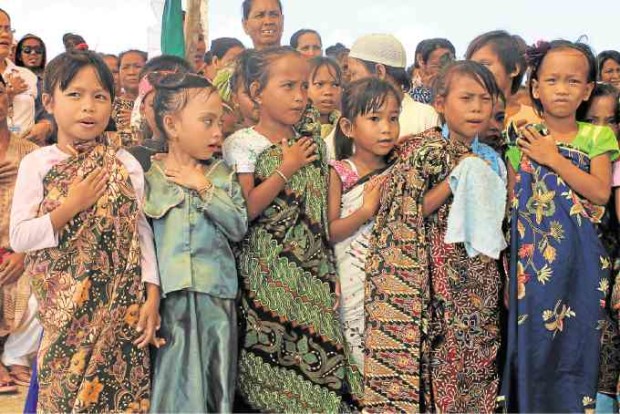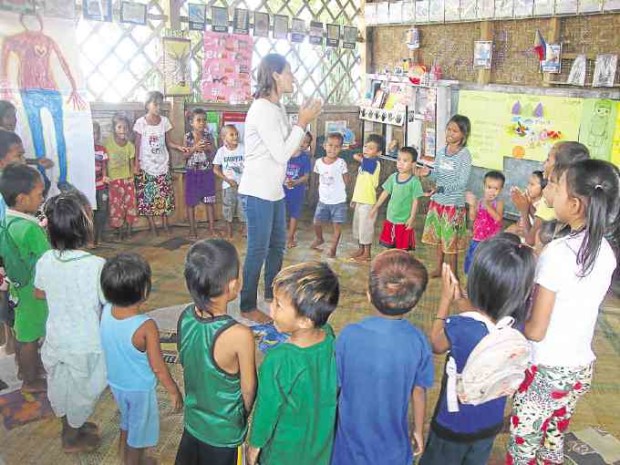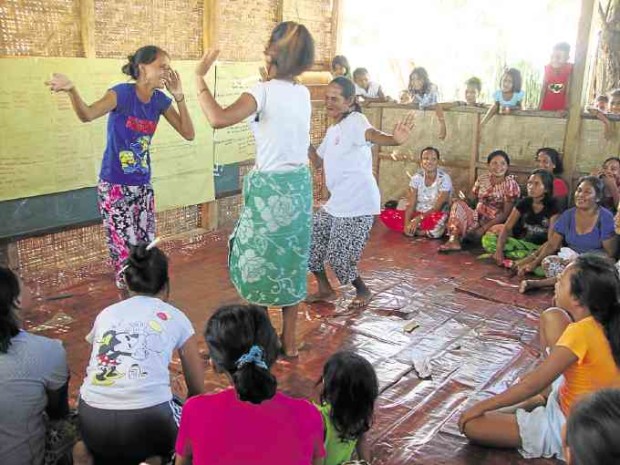Boat school for Bajau kids
Karding was 6 years old when he and his family were forced to flee their Bajau community after their homes by the sea were burned down during the Zamboanga siege in 2013, and move to cramped bunkhouses at a site provided by the government.
Today, all the boy wants is an assurance of protection to his new home, like many indigenous peoples (IPs) who had seen their dwellings destroyed, their ancestral land taken over by settlers, and basic social services denied them.
There are around 110 ethnic tribes in the Philippines, and most of them are struggling to keep their land and nurture their way of life, for themselves and the next generations. IP literacy rates are also among the lowest in the country as standard education programs have failed to consider their cultures, languages and current realities.
But hope has risen in certain ethnic communities. Karding, for example, has found a safe space for learning in Angiskul Ma Bangka (AmB), or Classes in Bancas, an innovative program that helps the young gain access to culturally relevant education.
AmB was initiated in 2014 to serve Zamboanga’s Bajau children, who were displaced with their families during the prolonged armed conflict between the Moro National Liberation Front and government troops.
Article continues after this advertisementIt was spearheaded by Cartwheel Foundation Inc. (CFI), a nongovernment organization that focuses on IP education, with Ateneo de Zamboanga University’s Center for Community Extension Services (Adzu-CCES) as implementing partner and Telus International Philippines Inc., Karapatan sa Malikhaing Paraan Innovative Human Rights Initiative (KaSaMa), and the Spanish Agency for International Development Cooperation (Aecid) as funding partners.
Article continues after this advertisementThe Department of Social Welfare and Development and the city social welfare and development were consulted about the program.
Education and peace
CFI and Adzu-CCES designed AmB to uphold both principles of IP education and peace advocacy. Program modules equip children with basic literacy and numeracy skills while preserving their cultural identity and promoting their psychosocial well-being.
The Bajau people’s distinct and vibrant culture remains at the heart of the education program. Their mother tongue, Binajau, is the primary medium of instruction.
They learn to dance their traditional “igal-igal,” accompanied by melodies produced by their elders on the “kulintang.” The children appreciate their daily practice of Islam’s “sambahayang” prayers.
Classes are held for three hours every day by two trained parateachers, Relinda Montimor and Sariba Abdulbasit, who are also Bajau.
When the AmB program started in November 2014, 48 children were enrolled. When more members of the community learned about the initiative, they asked that their children be allowed to participate as well. By December 2015, the number of enrollees swelled to 96.
The children’s age ranges from 3 to 11 years. None had attended school before and so did not know how to read or write.
In June 2015, the program’s first cycle graduated 77, or 80 percent of the total enrollees. Over half of the graduates were qualified to enroll in kindergarten in public schools.
Though the results showed that not all the children were completely ready for the next academic level, the jump from zero literacy to qualifying for
the public schools in only seven months was no mean feat. The Bajau parents recognized this and now, for its third cycle (2016-2017), AmB has 108 learners.
Safe learning space
Beyond helping the children build competencies in line with the Department of Education’s learning standards, AmB also provides them a safe space for learning. The use of familiar cultural elements, like fishing boats, colorful “malong” and materials from the sea help them gain a sense of normalcy and stability in the context of their displacement and poor living conditions.
This is consistent with Article 39 of the UN Convention on the Rights of the Child (1990), which states that “recovery and reintegration take place in an environment which fosters the health, self-respect and dignity of the child.”
In March this year, AmB’s floating classroom was launched. Abdulbasit led the young learners and their parents in singing the national anthem.
Inside the boat are indigenous instructional materials prepared by the teachers with the help of the parents, using resources from around their community. These include alphabet cards with real objects, such as shells and fishing nets, on which words in Binajau are written.
A special learning corner displays local crafts like “bangah” (clay pot) and “luwag” (water dipper made from coconut husk).
IP education is unique in that it often uses approaches that differ from those used in traditional instruction. Indigenous knowledge, skills, practices and values are highlighted and incorporated in the program. Education programs for IP communities are fruitful when these are facilitated rather than forced.
Heritage center
Openness is key in nurturing a dynamic where teachers and students learn from each other. The teachers must understand the world as perceived by the children and respect their identity. Only when connections are made between new information being presented and a child’s known way of life can learning become relevant and have lasting value.
Al-Fatima Ahiyal, local project coordinator from Adzu-CCES, describes the floating classroom as both a learning space and a center of living heritage for the Bajau learners, their parents and the rest of the community.
“For other indigenous peoples, land is life; for the Bajau, the sea is life. The boat has deep roots in the Bajau, as they are the same in often setting to sail at sea. They do not view the AmB boat only as their classroom. They also see it as a promotion of their culture. It is colorful not only because it was built as a day-care center for kids but also to show the vibrance of Bajau culture,” Ahiyal said.
“They take pride in the floating classroom as truly theirs. Not only does it show their desire to attend school, but it also reflects the importance they give to their culture.
The current number of learners has ballooned; I think it is the boat that has helped in encouraging the children. It is where they feel at home. They understand that the boat represents their tribe.”
When the boat was turned over to the community, one of the parents said that begging was not the only thing that the Bajau know how to do, Ahiyal said. “They also know how to educate themselves and enrich their own culture all the more.”
There is a plan to move the boat school together with the Bajau families when they are finally given permanent coastal homes.

Bajau mothers meet to coordinate tasks to support Angiskul Ma Bangka. —PHOTOS FROM CARTWHEEL FOUNDATION INC.
Community members partner in the AmB and help determine the program’s directions, in line with the Indigenous Peoples’ Rights Act (Republic Act No. 8371), which states that “free, prior and informed consent” must be given by them on matters that directly involve them.
To show their appreciation, parents have been volunteering to help in the construction and maintenance of the temporary learning center and the floating classroom. They are also involved in the daily supplemental feeding program for the children, and attend the regular community meetings and workshops conducted by the stakeholders.
Their involvement led to the formation of Kahapan, Kasulutan, Kasanyangan Parimpunan or KKKP (Service, Peace and Progress Organization). The group aims to ensure that AmB activities are carried out, encourage more people to participate, harness the leadership potential of active members and enable the community to own the program.


